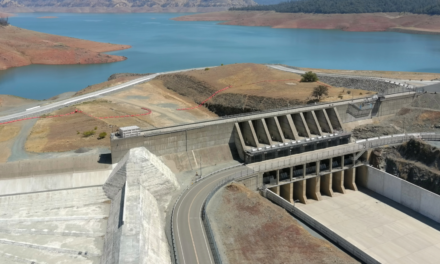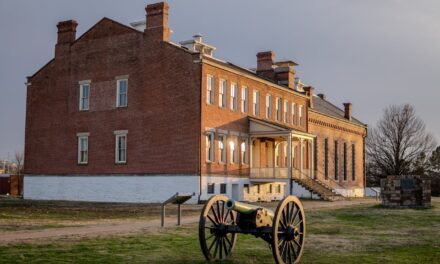Hawaii, the 50th state of the United States, has a history marked by cultural diversity, significant historical events, and strategic importance.
From its early indigenous roots and European exploration to its modern status as a major tourist destination and strategic military location, Hawaii’s history is rich and diverse.
Below, we delve into the captivating history of Hawaii, covering its foundation, key historical events, and notable landmarks.
Table of Contents
Early History
Indigenous Inhabitants and European Exploration
Before European explorers arrived, Hawaii was inhabited by Native Hawaiians who developed complex societies with rich cultures, agriculture, and navigational skills.
- Polynesians from the Marquesas Islands first settled in Hawaii around 300-600 AD, followed by Tahitian settlers.
- The Hawaiian society was organized into a caste system with chiefs, priests, and commoners.
European exploration began in 1778 when British Captain James Cook arrived, marking the beginning of increased interaction with Western nations.
The Kingdom of Hawaii
The Kingdom of Hawaii was established in 1810 under King Kamehameha I, who unified the islands.
- The kingdom became a hub for trade and attracted missionaries and entrepreneurs.
- By the mid-19th century, Hawaii had become a significant producer of sugar and other agricultural products.
The influence of Westerners grew, leading to significant cultural and economic changes in Hawaiian society.
Key Historical Events
Overthrow and Annexation
In 1893, the Hawaiian monarchy was overthrown by a group of American and European business interests, leading to the establishment of the Republic of Hawaii.
- The coup was supported by the U.S. military, despite opposition from President Grover Cleveland.
- In 1898, the U.S. annexed Hawaii through the Newlands Resolution, making it a U.S. territory in 1900.
The annexation was controversial and marked by opposition from Native Hawaiians and other groups.
Path to Statehood
Efforts to achieve statehood for Hawaii began early in the 20th century but faced numerous challenges.
- World War II and the strategic importance of Hawaii in the Pacific accelerated statehood efforts.
- On August 21, 1959, Hawaii was admitted to the Union as the 50th state.
Statehood was seen as a way to secure greater political representation and economic benefits for Hawaii.
20th Century Growth and Development
Economic and Social Developments
The mid-20th century saw significant economic and social changes in Hawaii.
- The state’s economy diversified, with tourism becoming a major industry.
- Military bases established during World War II continued to play a critical role in Hawaii’s economy.
Hawaii also saw advancements in education, healthcare, and infrastructure, contributing to its modern development.
Native Hawaiian Movements
The late 20th century saw increased activism among Native Hawaiians focusing on cultural preservation and land rights.
- The Native Hawaiian sovereignty movement gained momentum, advocating for the recognition of Native Hawaiian rights and self-determination.
- In 1993, the U.S. government formally apologized for its role in the overthrowing of the Hawaiian Kingdom.
These movements have significantly influenced Hawaii’s social and political landscape.
Notable Landmarks
Pearl Harbor
Situated on the island of Oahu, Pearl Harbor is a historic site known for the 1941 attack that led the U.S. into World War II.
- The USS Arizona Memorial commemorates the lives lost during the attack.
- Pearl Harbor remains a vital military installation and a site of historical significance.
Pearl Harbor is a significant site for both historical education and national remembrance.
Hawaii Volcanoes National Park
Located on the Big Island, this park features two of the world’s most active volcanoes that are brewing, Kilauea and Mauna Loa.
- The park offers unique geological features and cultural sites significant to Native Hawaiians.
- Visitors can explore volcanic landscapes and learn about the island’s natural history.
The park highlights Hawaii’s unique geological activity and natural beauty.
Iolani Palace
Iolani Palace in Honolulu is the only royal palace in the United States and served as the residence of the Hawaiian monarchs.
- The palace is now a museum, offering insights into Hawaii’s royal history and cultural heritage.
Iolani Palace symbolizes Hawaii’s monarchical past and cultural richness.
Governance
State Government
Hawaii operates under a constitution adopted in 1959.
- The state government consists of the Executive, Legislative, and Judicial branches.
- The governor, currently Josh Green, leads the executive branch.
The state government works to address the needs of its diverse population and manage its resources effectively.
Local Government
Hawaii’s local government structure includes counties, each responsible for services such as education, public safety, and infrastructure.
- The state is divided into four counties: Honolulu, Maui, Hawaii, and Kauai.
Local governance ensures that the diverse needs of Hawaii’s communities are met.
Demographics and Growth
Population
As of 2023, Hawaii’s population was approximately 1.44 million. The state’s demographic makeup includes a significant Asian American population and the highest percentage of multiracial residents in the U.S.
Diverse demographics and steady growth reflect Hawaii’s appeal as a place to live and work.
Education and Economy
Hawaii is home to several prominent educational institutions, including the University of Hawaii.
- The state’s economy is diverse, with key sectors including tourism, agriculture, military defense, and technology.
- Hawaii’s unique geographic location makes it a critical hub for international trade and military strategy.
These factors contribute to the state’s economic resilience and cultural vibrancy.
State of Hawaii Q&A
Q: When was Hawaii admitted to the Union?
A: Hawaii was admitted to the Union as the 50th state on August 21, 1959.
Q: Who were the original inhabitants of Hawaii?
A: The original inhabitants of Hawaii were Polynesians who settled the islands around 300-600 AD, establishing complex societies with rich cultures.
Q: What role did Hawaii play during World War II?
A: Hawaii was a strategic military base during World War II, most notably marked by the attack that happened on Pearl Harbor on December 7, 1941, which led the United States to enter the war.
Q: How did Hawaii contribute to the Civil Rights Movement?
A: Hawaii’s diverse population and history of racial integration played a unique role in the broader Civil Rights Movement, with local movements advocating for civil rights and Native Hawaiian sovereignty.
Q: What are some notable historical landmarks in Hawaii?
A: Notable landmarks include Pearl Harbor, Hawaii Volcanoes National Park, and Iolani Palace. These sites highlight Hawaii’s historical significance and natural beauty.
Q: How is Hawaii governed?
A: Hawaii operates under a constitution adopted in 1959, with an Executive, Legislative, and Judicial branch. The governor leads the executive branch, and local governance is managed by counties.
Q: What is the current population of Hawaii?
A: As of 2023, Hawaii’s population was approximately 1.44 million. The state continues to attract residents with its diverse culture, educational opportunities, and economic resilience.
Hawaii’s dynamic history and commitment to preserving its natural and cultural heritage make it a unique and vibrant state.
By maintaining its historical landmarks and fostering growth in new industries, Hawaii continues to honor its past while looking forward to a prosperous future.





